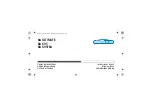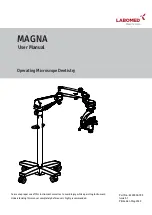
6.
TESTING A LOOP TESTER
Connect the tester to the RCD and loop test supply socket. When
the interlock cover is closed, the earth pin of this socket is connected
to the supply neutral.
Note
: The MTB7671/2 can be used to perform either ‘No Trip’ or
‘High Current’ loop tests.
6.1
Conducting a Loop Test
Set the RCD and loop test select switch to [Loop] and perform a loop
test using the tester. This returns a value for the initial test condi-
tions.
✍
Record the reading on the record card
6.2
Conducting a +10
Ω
Loop Test
Set the RCD and loop select switch to [Loop + 10
Ω
] and perform a
loop test using the tester. Check that the loop impedance reading
has increased from the reading in 6.1 by a nominal 10
Ω
.
NOTE
: allow at least 10 seconds between tests if conducting a high
current loop test.
✍
- Record the reading on the record card.
6.3
Conducting a +180
Ω
loop test
Set the RCD and loop select switch to [Loop + 180
Ω
] and perform
a loop test using the tester. Check that the loop impedance reading
has increased from the reading in 6.1 by a nominal 180
Ω
.
✍
- Record the reading on the record card.
NOTE
: Some 3 wire loop testers give a >50 V touch voltage on this
range. A 2 wire test can be used for calibration checks.
6.4
Performing a PFC test
Set the RCD and loop select switch to [PFC] and perform a loop test
using the tester. The tester will perform a PFC test using
[Loop + 10
Ω
] circuit.
NOTE
: allow at least 10 seconds between tests if conducting a high
current PFC test.
✍
Record the result on the record card
NOTE
: The MTB7671/2 performs a real loop test, the test results for
which can vary from test to test, particularly with ‘No Trip’ tests. It
is recommended that several (No Trip) tests are performed and the
average result recorded.
































